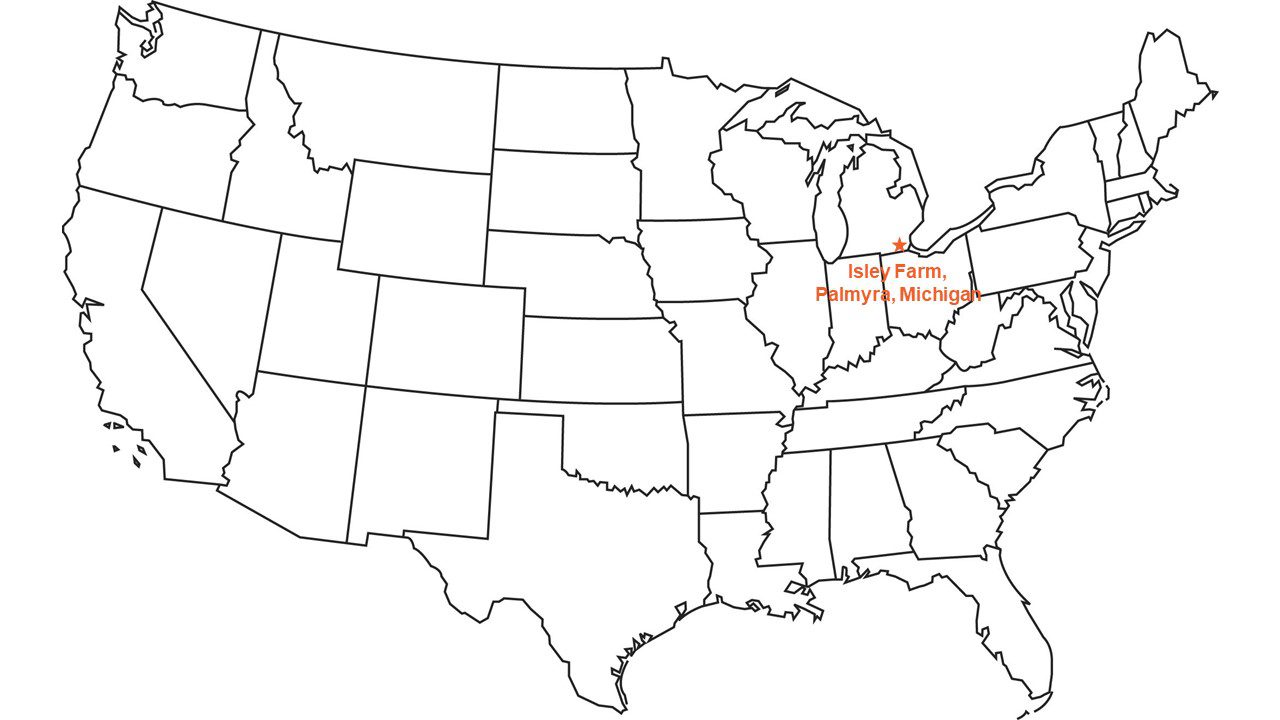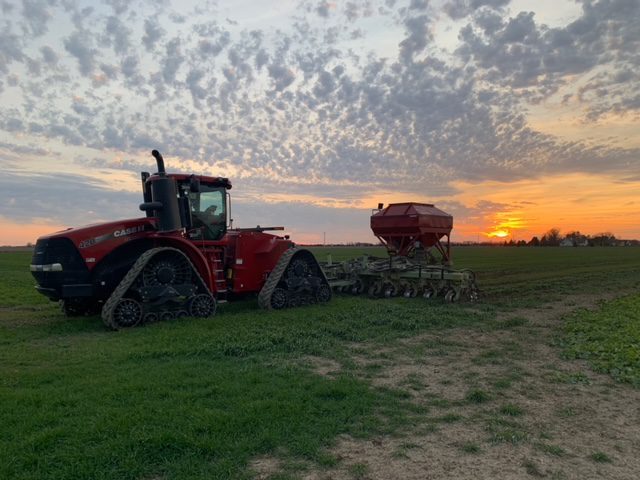 We finished harvesting our crops in mid-November. Wet weather slowed all farmers in our region of the eastern U.S. Midwest, so after we finished combining corn, we helped a few neighbors finish in their fields. We wrapped up before we received more rain and the first snow of the winter. The snow melted, but the fields remained wet.
We finished harvesting our crops in mid-November. Wet weather slowed all farmers in our region of the eastern U.S. Midwest, so after we finished combining corn, we helped a few neighbors finish in their fields. We wrapped up before we received more rain and the first snow of the winter. The snow melted, but the fields remained wet.
While the fields were wet, we cleaned the combine well. Careful checking and cleaning after the season will help our combine to last longer and hopefully minimize breakdowns next year.
As weather and field conditions allow, we still plan to strip-till as many of this year’s soybean fields that will be planted to corn next year as possible. Strip-tilling cuts a narrow strip in the soil where we place fertilizer for the next crop. Next spring, corn will be planted into those strips. The ground needs to be firm enough that we don’t cause compaction, but we don’t want to strip-till frozen ground. Whatever we don’t get done this fall will have to wait until next spring before planting.
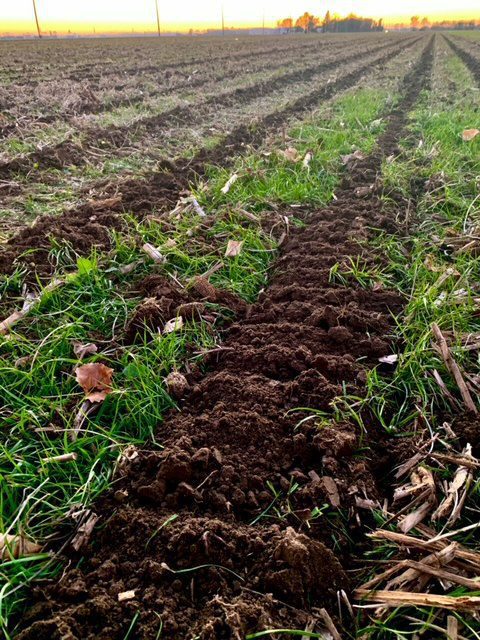 We are also getting soil samples taken for half of our fields. Every year, we sample the fields that were planted to corn, when the most nitrogen has been used. We’ve established a pattern so that all our fields get sampled every two years. That allows us to plan what fertilizer needs to be applied to the soybean crop next year, and then the corn crop the year after that. The soil samples help us apply just the amount fertilizer crops in that field will need each year, supporting sustainability and protecting water quality.
We are also getting soil samples taken for half of our fields. Every year, we sample the fields that were planted to corn, when the most nitrogen has been used. We’ve established a pattern so that all our fields get sampled every two years. That allows us to plan what fertilizer needs to be applied to the soybean crop next year, and then the corn crop the year after that. The soil samples help us apply just the amount fertilizer crops in that field will need each year, supporting sustainability and protecting water quality.
Our cover crops are growing well, although they look better in some areas than in others. We suspect some of that is due to uneven seeding from the airplane. The main advantage of aerial cover crop seeding is that it allows us to plant them before harvest. However, this approach comes with drawbacks, like spotty emergence. We will watch the spotty areas to see how that impacts next season’s crops and our sustainability.
Sustainability is more than a single practice. It’s a philosophy that informs every decision we make. Throughout the year, we try to do what is best for our crop, our land and our water, in order to improve it for generations to come.
This year, we started with spring fieldwork and planting. Previous soil tests informed fertilizer application as we wrapped up planting. We also saw evidence that our conservation practices, coupled with seed technology, are helping our fields and crops adapt to changing climate patterns. That’s why we make time to explain our practices to others. I even had a conversation about conservation in agriculture on an airplane as I traveled to a recent industry meeting! Our fields handled both heavy rains and dry periods reasonably well this year. After heavy rains early in the year, our fields survived a late dry period well, because our practices minimized water loss. We seeded cover crops just before soybean harvest started, and then wet weather slowed corn harvest.
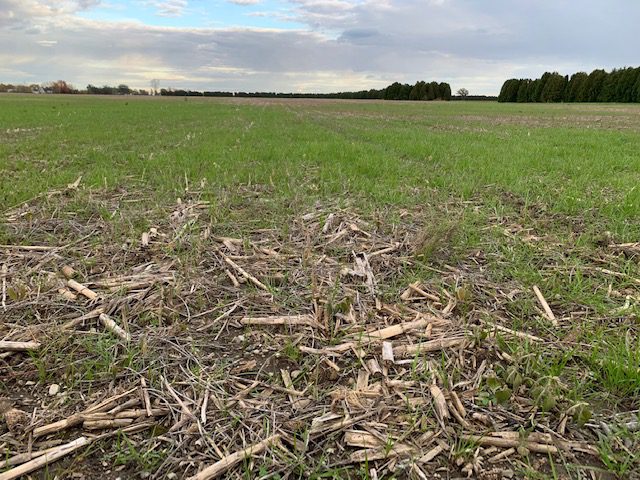 As we assess last season, we also review all the data we gathered on our crops this season to help us make decisions for next year. We look at what worked and what didn’t. We evaluate how different soybean varieties and corn hybrids handled everything that happened throughout the season. We consider many factors as we look back at this season and think about next year. We strive to do the best we can with the factors we can control, because we can’t control factors like temperature and moisture.
As we assess last season, we also review all the data we gathered on our crops this season to help us make decisions for next year. We look at what worked and what didn’t. We evaluate how different soybean varieties and corn hybrids handled everything that happened throughout the season. We consider many factors as we look back at this season and think about next year. We strive to do the best we can with the factors we can control, because we can’t control factors like temperature and moisture.
We plan to buy as many inputs for 2022 as possible before the end of December. Buying early often means we save some money on seed, fertilizer and other inputs. For example, we are paying close attention to supply chain concerns about the availability of common soybean herbicides next season, as that may influence what soybeans we plant.
Reviewing data and experiences of last season also directs the projects we focus on during the winter. We constantly evaluate our practices and equipment to look for ways to improve. Sometimes, when we see an opportunity for improvement, we also create our own solution. Farmers are innovative. For example, my husband Jim decided it would be valuable to create a float inside our fertilizer tank to more easily see how much is left. This winter he is creating a custom float that will let him better manage fertilizer applications and tank refills.
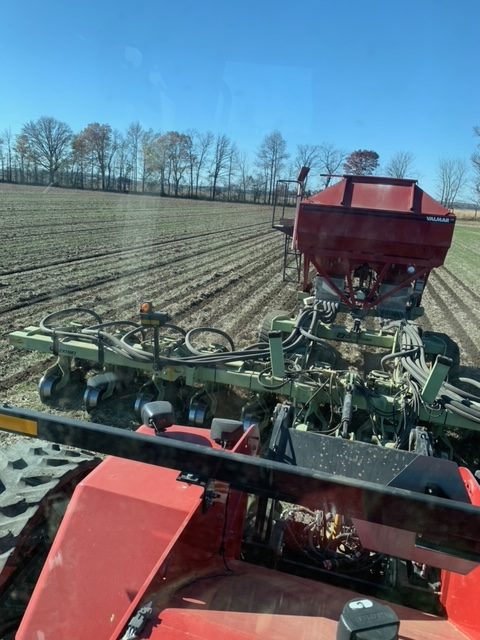 We also ordered a new corn planter for next season. Hopefully we will get it in February, with plenty of time to add and install the technology we need. However, we realize that supply chain challenges could delay delivery. For that reason, we won’t sell our old corn planter until we have the new one ready to go.
We also ordered a new corn planter for next season. Hopefully we will get it in February, with plenty of time to add and install the technology we need. However, we realize that supply chain challenges could delay delivery. For that reason, we won’t sell our old corn planter until we have the new one ready to go.
My hope is that throughout this season, I’ve shared the careful thought we put into every decision we make as farmers. We are proud to produce a safe, plentiful supply of soybeans get them where they need to go efficiently, all with as little environmental impact as possible. Thank you for following along.
This field update is funded by the soybean checkoff. To share or republish part or all of this Ground Work 2021 article, please link to the original article and credit www.USSOY.org.
